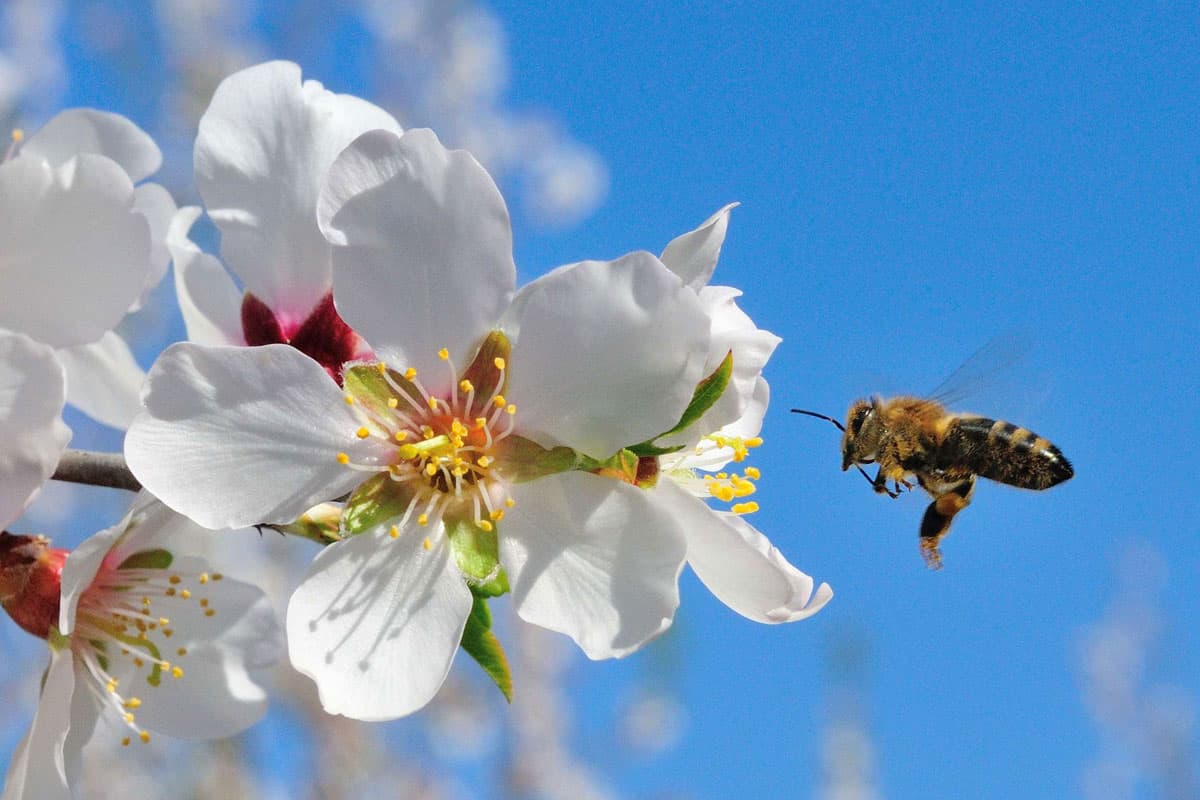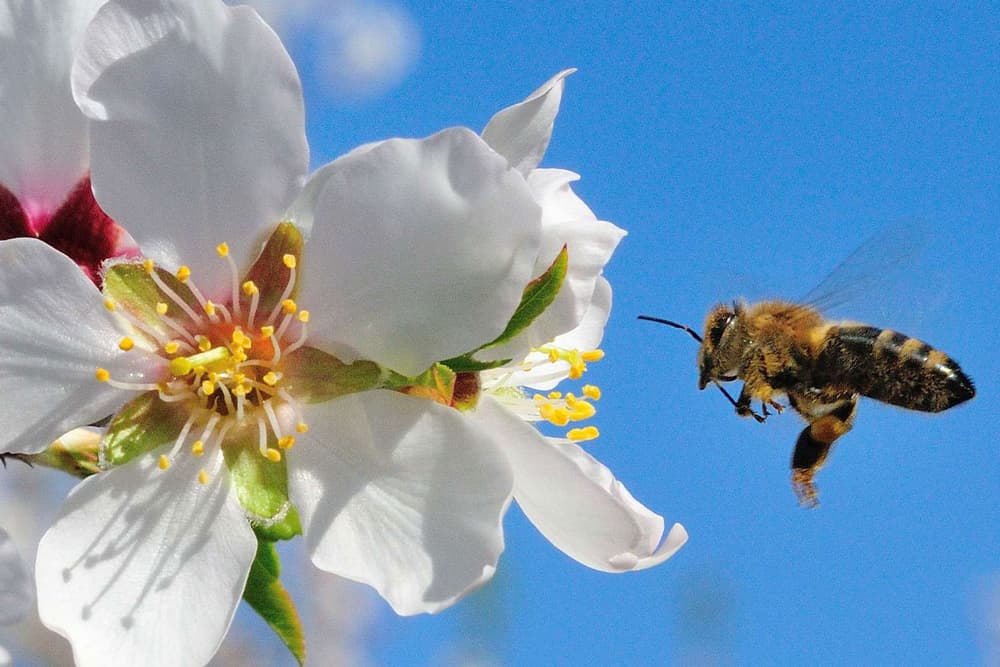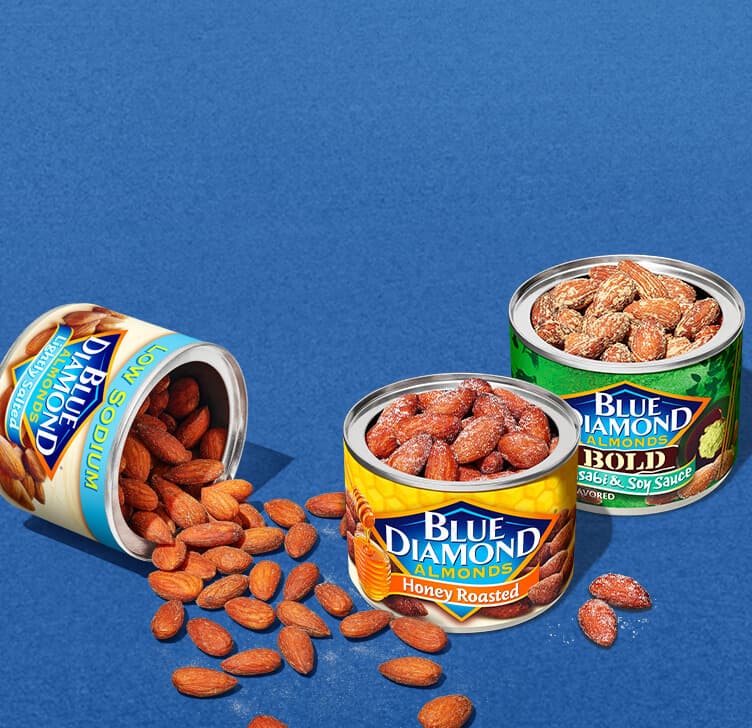

It’s a Bee’s Life: An Interview with John Miller of Miller Honey Farms
At Blue Diamond, we’re fortunate to work with experts in all lines of agriculture that affect our business, and bee experts are no exception. Have you ever wondered what goes on in a bee hive, and what the daily life of a bee looks like? Blue Diamond spoke to beekeeper, John Miller of Miller Honey Farms for answers.
Blue Diamond Growers(BDG): Thanks John for sitting down with us to help us better understand a day in the life of a honey bee. Here’s our first question – What is the typical life cycle of a bee?
John Miller (JM): A honeybee lives about 35 days this time of year. In November, during dormancy, a honeybee may live 120 days.
During times of prosperity, honeybees work hard gathering pollen and nectar from flowers.
Pollen and nectar are what honeybees eat. Pollen = protein. Nectar = honey.
Bees seek abundance. When apple trees are in bloom, bees work the apple tree. When wildflowers bloom, bees work wildflowers. And, of course, when almond trees are in bloom, bees work the almond tree.
During winter, when no flowers are in bloom, the hive is dormant, preserving the stores gathered during summer. Beekeepers carefully monitor the available feed, so hives don’t go hungry.
BDG: What are the different types of roles bees play in a hive?
JM: When a bee is born, these baby bees can’t fly until their muscles mature about the 14th day of their lives. During the first two weeks of life, they busy themselves keeping the hive orderly, feeding unborn bees or attending to the queen, for example.
BDG: Is it normal to see dead bees outside of a hive? Why would you see this?
JM: A beehive experiences a lot of new life each day during spring and summer – and with that – a lot of bees die. Housekeeper bees remove the dead- and discard them near hive entrances
BDG: How do bees interact with each other in and out of the hive?
JM: A beehive is very dark on the inside. Hive entrances are kept small – so bees can defend their home. Bees don’t see very well in the dark – like humans, but bees have a very sensitive sense of smell. The hive hums with activity, directed by the pheromones in the hive. The queen has her own distinctive scent, calming the hive.
The unborn bees also emit pheromones [feed me, feed me] to housekeeper bees.
And of course, the waggle dance – where a worker bee, returning from scouting fields, announces the location of fresh groceries [pollen and nectar].
BDG: Please briefly describe the relationship between grower and bee keeper – how do both parties ensure bee health during bloom?
JM: Growers and beekeepers enable both the tree and the bee to thrive.
Growers and beekeepers agree to have the bees do their work in a safe place for a fair price. The beekeeper trusts the grower to keep their orchards alive and thriving. The orchardist trusts the beekeeper to keep their hives alive and thriving.
Both succeed, but the real winner is the consumer of almonds and honey – people – who enjoy the health and wellbeing made possible by the tree and the bee.
Beekeeper John Miller operates Miller Honey Farms in Idaho, North Dakota, and California. Learn more at https://www.facebook.com/MillerHoneyFarms/ and https://www.millerhoneyfarms.com/



